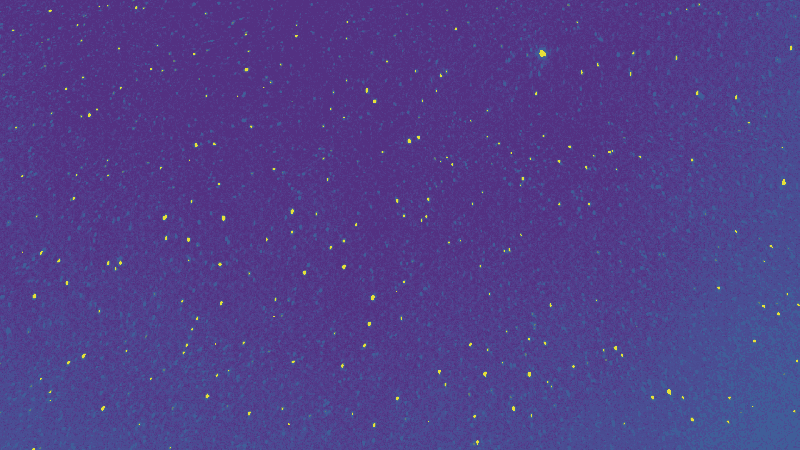A shooting star is normally a blink-and-you’ll-miss-it event. That space rock, or meteor, leaves a fiery trail of light as it zips through the atmosphere. Then it’s gone. But sometimes, a lasting afterglow remains for minutes. For more than a century, astronomers have wondered why some meteors leave such “persistent trains.” Now, they at last may have the answer.
Explainer: Understanding meteors and meteor showers
To leave a lasting trail, meteors need to aim low. Space rocks that fall to about 90 kilometers (56 miles) above the ground before burning up boast lasting afterglows. But those that burn up higher in the atmosphere don’t. These data come from a new survey of persistent meteor trains. Astronomers shared their new findings in the July issue of Journal of Geophysical Research: Space Physics.
Amateur astronomers often record such trails “as a nice movie,” says Gunter Stober. This astrophysicist, who works at the University of Bern in Switzerland, did not take part in the new meteor survey. He concludes that it’s “really the first more comprehensive, total overview of [shooting star observations].”
Shooting star trails dazzle due to chemistry
Persistent trains form when metals that have burned off an incoming space rock react chemically with a form of oxygen — ozone (O3) — in the air. These O3 reactions give off heat and light. These can keep a meteor train aglow for up to an hour.
Studies in the 1940s and 1950s suggested that such trains were rare. Only one in every 750 meteors was thought to produce one. And persistent trains were mostly associated with the brightest shooting stars.
More recent studies have focused on the Leonid meteor storms in the early 2000s. Those were the most dramatic such showers in decades. Only the fastest meteors leave trains, these studies found. These were space rocks zinging through the air at speeds of around 70 kilometers (43 miles) per second.
But such surveys had their limits. Some were too broad, including one-off views of meteors from observers around the world. Others were too narrow; they might focus on just one spectacular meteor shower.
For the new survey, researchers set up a camera to stare at the same patch of sky above New Mexico for nearly two years. From October 2021 to July 2023, it recorded every light streak that crossed its field of view.
In that time, the camera saw nearly 7,500 meteors. About 850 of them — around one in every eight meteors — left persistent trains. One in 19 meteors left trains lasting more than five minutes.
That was surprising for two reasons. First, way more of the shooting stars left persistent trains than had been expected. Second, the meteors leaving those trains had all sorts of speeds and brightnesses.
Previously, many scientists had held that “these persistent trains were only formed by the fast, bright meteors,” says Logan Cordonnier. He’s an astrophysicist at the University of New Mexico in Albuquerque. “We found that it doesn’t need to be fast,” the new survey’s leader says. In fact, he notes, “Most of the persistent trains were formed by slower meteors.”
All thanks to ozone
The real factor that determined whether a shooting star left a lasting train was ozone, he says.
Meteors that zipped down to altitudes of 90 kilometers were far more likely to leave trains than those that burned up higher in the atmosphere. That key altitude of 90 kilometers is above the ozone layer in Earth’s atmosphere. There is a little ozone at that height, Cordonnier says, just not nearly as much as below it.
In theory, meteors passing through the ozone layer, below, could also leave trails. But few make it that far down without burning up completely.
Future views of persistent trains could help probe the chemistry of Earth’s atmosphere around 90 kilometers up. It’s a mysterious layer of air. Cordonnier likens it to “the spot in your back where you can’t itch.”
Basically, “it’s too high in the atmosphere for weather balloons. And it’s too low for satellites to take direct measurements,” Cordonnier says. “It’s a difficult region to probe.” Persistent trains, though, “happen for free, all the time,” he notes. “We just have to look.”
Stober would like to see the new catalog used to answer another question: Why do some trains hold their shapes for so long, while others blow away quickly? Explaining the chemistry that produces trains in the first place is interesting. “But you need a force to keep the train as a train,” he says.
One idea is that tiny, electrically charged dust grains knocked off of a space rock might produce an electric field that keeps the train together. A closer look at the new catalog and others could help prove this notion right or wrong.
Do you have a science question? We can help!
Submit your question here, and we might answer it an upcoming issue of Science News Explores

















